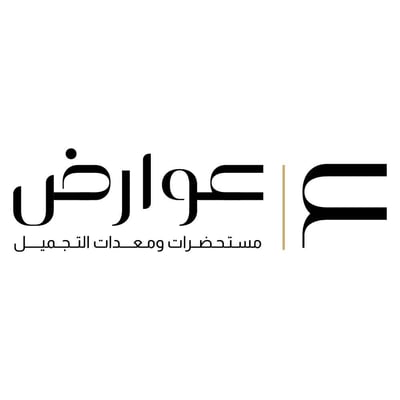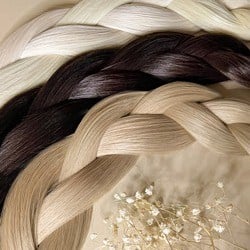Classifications of hair types and how to deal with them
At first glance, it may seem as if the types of poetry have increased. But is it possible for this proposition to be logical? Types of poetry are not increasing, but we are the ones increasing our knowledge and understanding of ourselves day after day. Each of us tries to borrow from this science to learn and be “reckless” about how to achieve our desires and the results promoted by the products.
Each of us carefully chooses where and how to spend our money and effort without regret.
Today we help you by presenting the most important points in hair classifications to help you understand your hair and highlight its natural beauty more.
-Types of poetry and their names
-Care methods for every type of hair
-The most important thing to look for in products for your hair, according to your hair type
Types of hair and their names
Hair is classified according to its structure and appearance and according to the amounts of fat it secretes. The structure of the hair is known as (smooth, wavy, and curly), and the external appearance of the hair can be changed with styling products and devices, noting that the different structures of the hair require different care when continuing to style it so as not to cause damage to the hair.
Wavy hair, when straightened, needs heat-protective products to maintain its health.
The classification of hair according to the amount of fat secreted depends on the nature of the hair and cannot be changed for oily or dry hair
Classifying hair as only straight or curly is superficial and inaccurate. The best way to know your hair classification is to look closely at the cross-section of the hair.
The closer the diameter of the hair is to the circular shape, the straighter the hair becomes, and the more the cross-section tends towards an oval shape, the more twisted and wavy it becomes.
Until recently presented a new classification that separates hair types into ten as shown.
From here, it has become easy for you to know your hair type with the best method for testing.
-Wash your hair using shampoo only
-Rinse it well
- Dry it gently, leaving the towel to fully absorb the water
- Comb it and leave it to dry naturally without hair straighteners
From here you can observe your natural hair and know its classification accurately
You have heard about international classifications with the letters A, B, and C according to the degree of hair curl as follows
Straight hair does not naturally contain any frizz or bends at all, as the hair grows from its root and extends to its tip without bending. Its straightness does not automatically mean that the hair is smooth or rough, so it is recommended to avoid applying oily products that are heavy in texture. As it tends to be greasy.
A2: Soft, wavy in a gradual and simple manner, where the hair begins to be straight and the waves begin to appear gradually to the ends of the hair. The waves are wide and loose and give the hair a wavy, dry appearance. Make sure to moisturize it and style it with light-textured products.
B2: It is denser than straight hair, and begins to wave gradually, but the waves in this type are sharp and clearer, resembling the shape of the letter S, and it requires more effort in styling to remove the waves.
C2: The waves are closer to the hair roots, and the waves are also sharper and clearer than types A2 and B. 2 resembles the shape of the letter S in a clear and defined way and is more numerous. It also becomes denser and wavy in humid weather.
A3: The hair curls form in the form of loose circular rings spaced apart, and the circumference of one coil is slightly wider than the diameter of the tapered end of the type candle.
B3: The curls in this type are thicker and more numerous, and the circumference of one coil is approximately the same diameter as the highlighter. These small rings of hair need constant moisturization to maintain their vitality.
C3: The curliest of all curly hair types. The loops are tight, smooth, regular and numerous, so they can fit perfectly around a pencil. It is recommended to dry it with air and not to style it with heat, but rather to resort to serums and styling creams.
A4: Despite its obvious frizz, the hair is soft and has less frizz than the other two types. The hair can be wrapped around a thin wooden chopstick in this case.
B4: The waves increase in intensity to resemble the shape of the letter Z or Zig-Zag.
C4: The hair coils in this type are the tightest, weakest and most fragile of all, as the hair can break even with combing. Hair needs frequent nourishment and constant care
Care methods for every hair type
In the beginning, all hair types share the basics of hair care, such as always combing the hair from the bottom to the top, making sure to choose a shampoo that is free of parabens and sulfates, and not applying conditioner or cream to the scalp to prevent the accumulation of excess fat.
The most important thing that distinguishes the different methods of caring for different types of hair is the extent of the need for deep moisturizing.
Straight hair is affected by the thickness and texture of products, but it absorbs nutrients easily. You must be careful to choose creams with a lighter and more sticky consistency so as not to stick to your hair or give it a greasy appearance.
You should also economize on your consumption of products and creams for the same reason, and cut its ends constantly, as they can easily break off.
As for curly and wavy hair, it is prone to drying out easily, so shampoo enriched with oils is the best option, as it moisturizes the hair even during the shower. While trying not to over-wash it because that increases its dryness, and protects it from water more, oil baths before showering are a great option for wavy hair, as the benefits penetrate the hair and work to eliminate the natural oil in your scalp and protect it from breakage.
Choose a flexible hair brush that sways your hair so that it does not pull it tight and cause it to tangle and break.
In the end, the wavy hair is sensitive, so styling it and taking care of it using creams and staying away from heat as much as possible is the best solution.
The most important thing to look for in products for your hair, according to your hair type
As we mentioned, sulfates, parabens, and sodium are harmful to all types of hair, so you should use shampoo and conditioner that is free of the mentioned ingredients.
As for keratin and protein, on the contrary, they nourish and strengthen all types of hair. Protein is one of the basic units in building hair.
As for straight hair, you should look for moisturizing and strengthening ingredients and elements at the same time, because the straight hair strand is weak.
Tropical fruits, garlic, and aloe vera are one of the best options for him.
As for curly hair, it focuses on deep moisturizing with a heavy texture. Creams with avocado, olive oil, argan oil, and coconut are elements known to be rich and provide the highest levels of moisturizing.

